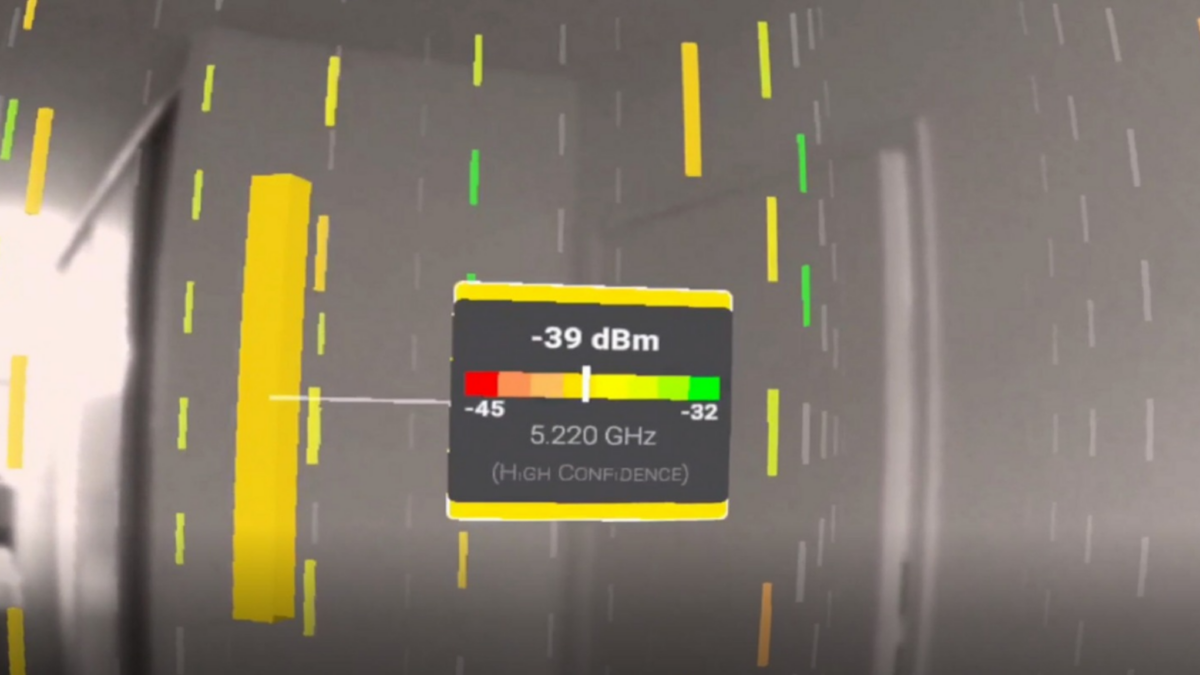Meta Quest XR app visualizes your Wi-Fi signal

BadVR uses an advanced XR experience now available for the Meta Quest 2 and the Quest Pro to display the Wi-Fi signal in a room.
With the Quest 2 (review), users can see their surroundings augmented via passthrough. While the Quest 2's mixed reality image is limited to a grainy black-and-white representation of a user's surroundings, the Quest Pro (review) features a color view and overlay.
There is currently not a large selection of quality XR apps that run on all of Meta's headsets. SeeSignal, a handy tool from BadVR is one of the few.
Check Your Wi-Fi signal with the Quest 2 or Quest Pro.
The team at BadVR is looking into data visualization and uses Quest headsets for a clever mixed reality app. Using the XR app SeeSignal, you can visualize the Wi-Fi signal in the room, which appears as a static representation of dashed lines or bars running vertically through the room. If the signal is particularly strong, the bars are green. Otherwise, they are gray. Red bars indicate particularly poor reception.
A pinch gesture on a bar displays more detailed information about the signal and its strength, such as the GHz band used and the dBm value at a particular point. An arrow in the lower right field of view shows where the signal is coming from. XR specialist Gabriele Romagnoli demonstrated the app in a video on LinkedIn.
Video: Gabriele Romagnoli / BadVR
The look and function of the application are rudimentary and, of course, there is something similar on a smartphone. "SeeSignal" is much more efficient. You can always keep an eye on the signal strength via the XR headset while keeping your hands free.
In case of connection problems between the laptop and the router, you can quickly determine weak coverage or a spot with a stronger signal with the app. When setting up offices, for example, desks could be positioned directly so that computers receive a perfect Wi-Fi signal.
Does the future belong to mixed reality?
In slimmer XR headsets designed for everyday use, similar overlays could make many things easier. How about being able to see at a distance which side of the street a bus will stop on and when the next one will arrive? The added value of XR applications is that the information can be accessed more intuitively and quickly than with a smartphone. BadVR's "SeeSignal" is a step in this direction.
Many of the best mixed reality experiences for Quest 2 and Quest Pro are still limited to gaming. Let's hope that more practical applications appear as the hardware becomes more suitable for everyday use in the next few years.
Note: Links to online stores in articles can be so-called affiliate links. If you buy through this link, MIXED receives a commission from the provider. For you the price does not change.